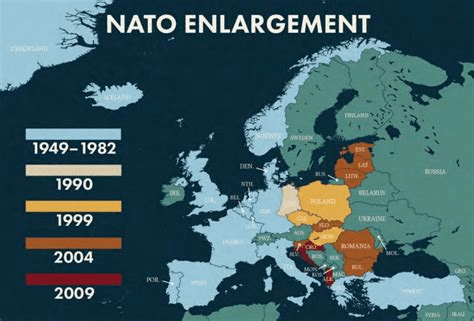I know there is a lot of interest in the Jeffrey Epstein story and the new revelations from Tulsi Gabbard about Barack Obama and his team’s efforts to fan the flames of Russiagate. I have been all over the Russiagate matter since 2017. Here is the link to a piece I published on December 18, 2018 with the nifty title, The Trump Coup Is a Threat to Our Republic. I am glad the information is finally coming out, but I knew this seven years ago. What took them so long? While Tulsi’s revelations are legit, I think she is releasing this information now to distract attention away from the Jeffrey Epstein scandal. Trump is getting killed in the polls — reportedly he is down 40% points on this issue.
For now, I want to focus on the war in Ukraine, i.e., the Special Military Operation (SMO), and clarify Russia’s motivation and objective for ending that conflict. We keep hearing the phrase, root causes. Russia wants the West to address the root causes. Ok, what are those? I think it is pretty simple — read the draft treaty that Vladimir Putin presented to Joe Biden in December 2021 and then you will understand. To spare you reading the entire document (I have linked to it in the next paragraph) I am going to summarize the key points.
The draft “Treaty between the United States of America and the Russian Federation on Security Guarantees” that Russia presented to Biden in December 2021, outlined a series of far-reaching security demands, reflecting Russia’s intent to reshape the post-Cold War security architecture in Europe. Here are the key points from the published text:
- No Further NATO Expansion
• The US would commit to preventing further enlargement of NATO, specifically barring Ukraine and other former Soviet republics from joining the alliance.
• This also included a ban on NATO military activity in Ukraine, Eastern Europe, the Caucasus, and Central Asia. - No Deployment of US Forces or Weapons in Certain Countries
• The treaty would forbid the US from deploying military forces or weaponry in countries that joined NATO after May 1997 (such as Poland, the Baltic states, Romania, and others).
• NATO infrastructure would have to be rolled back to pre-1997 locations. - Ban on Intermediate-Range Missiles
• Both Russia and the US would be prohibited from deploying ground-launched intermediate-range and shorter-range missiles outside their national territories, as well as in areas of their own territory where such missiles could strike the other’s territory. - Limit Military Maneuvers and Activities
• Limits on heavy bombers and surface warship deployments: Both sides would restrict the operation of heavy bombers and warships in areas from which they could strike targets on the other’s territory. (Note: In September 2020, Trump’s DOD authorized a B-52 to fly along the Ukrainian coast in the Black Sea.) - Nuclear Weapons Restrictions
• All nuclear weapons would be confined to each country’s own national territory. Neither side could deploy nuclear weapons outside its borders. (Note: US just sent a batch of nukes to England.)
• Withdrawal of all US nuclear weapons from Europe and elimination of existing infrastructure for their deployment abroad. - Mutual Security Pledge
• Each side would agree not to take any security measures that could undermine the core security interests of the other party. - Establishment of Consultation Mechanisms
• Proposals included the renewal or strengthening of direct consultation mechanisms, such as the NATO–Russia Council and the establishment of a crisis hotline. - Indivisibility of Security Principle
• Included a reaffirmation that the security of one state cannot come at the expense of the security of another, formalizing Russia’s interpretation of the “indivisible security” concept.
Instead of engaging the Russians in negotiations on these matters, Biden’s Secretary of State, Antony Blinken, essentially told Russia’s Foreign Minister Lavrov, that Russia could take the treaty and shove it up its own ass. So much for diplomacy. Had the US agreed to discuss the draft treaty with the Russians, the SMO would not have been launched in February 2022. But that is the critical point… The US had no intention of seeking a peaceful settlement with Russia. For example, the CIA, using DOD cover, had already invested tens of millions of dollars in bio labs scattered throughout Ukraine. According to Russia’s Ministry of Defense, it recovered documents that identified a network of 30 US-funded biological laboratories in Ukraine that were conducting research on dangerous pathogens as part of a bioweapons program. Ukraine was nothing more than a pawn in a Western game of strategic chess, with the ultimate goal of wrecking Russia and taking control of its natural resources. The West was not ready to quit that game.
Until NATO’s threat to Russia is taken off the table, the Russia’s war with the West will continue… It represents an existential threat to the Russian people. The talks in Turkey between Russia and Ukraine do nothing to address or resolve the root causes.
Reprinted with permission from Sonar21.

